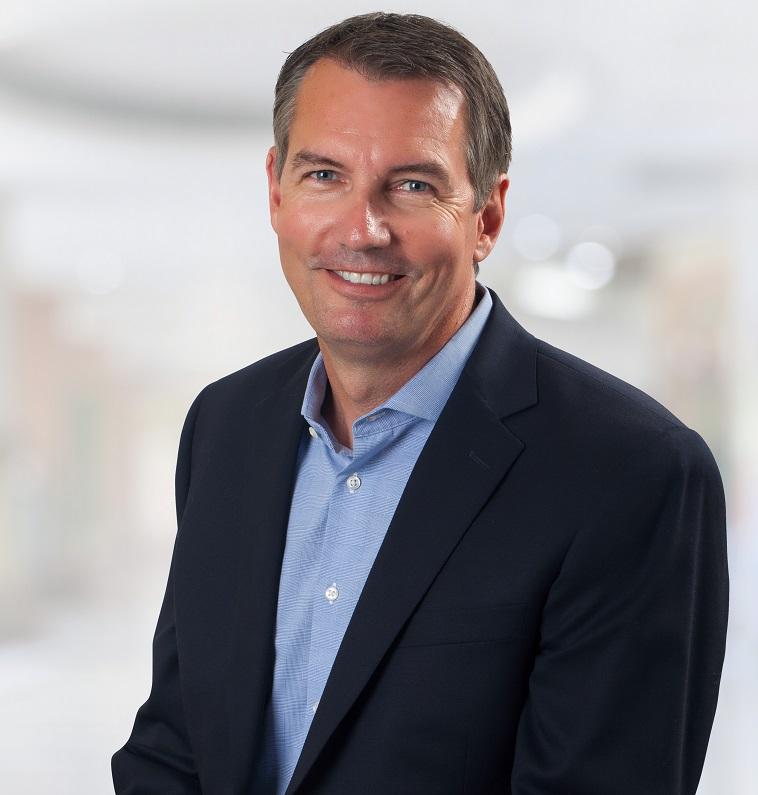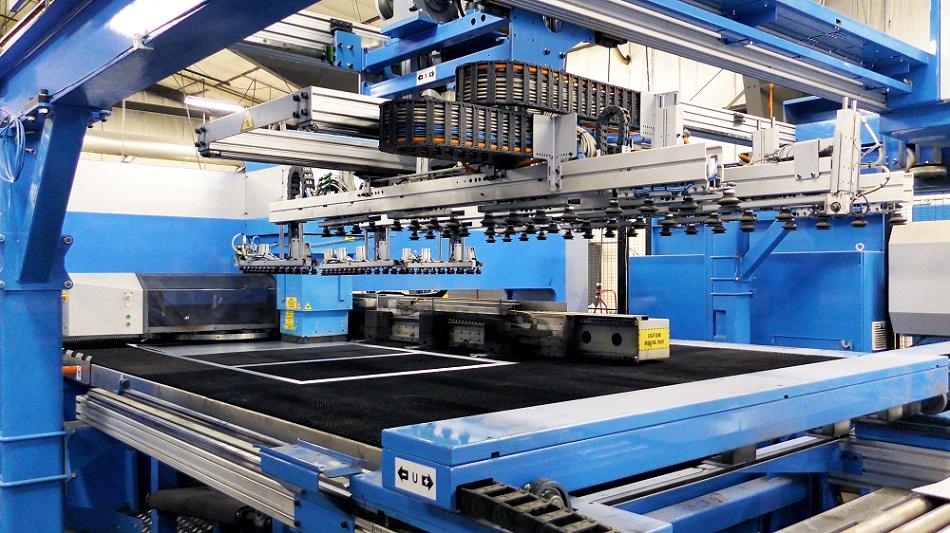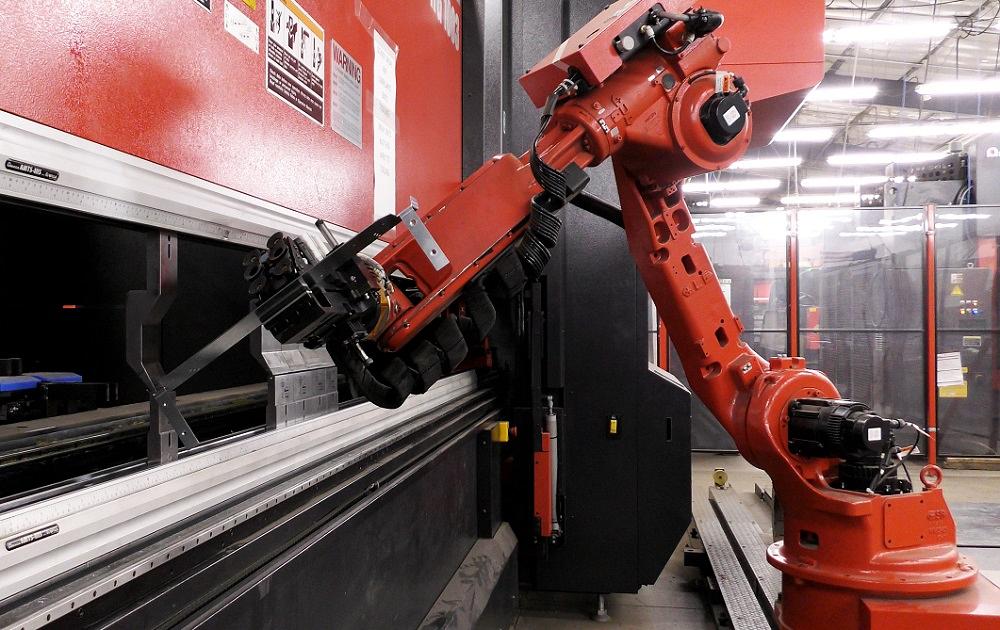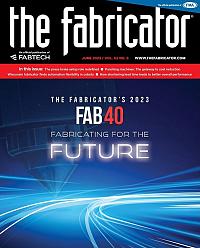Senior Editor
- FMA
- The Fabricator
- FABTECH
- Canadian Metalworking
Categories
- Additive Manufacturing
- Aluminum Welding
- Arc Welding
- Assembly and Joining
- Automation and Robotics
- Bending and Forming
- Consumables
- Cutting and Weld Prep
- Electric Vehicles
- En Español
- Finishing
- Hydroforming
- Laser Cutting
- Laser Welding
- Machining
- Manufacturing Software
- Materials Handling
- Metals/Materials
- Oxyfuel Cutting
- Plasma Cutting
- Power Tools
- Punching and Other Holemaking
- Roll Forming
- Safety
- Sawing
- Shearing
- Shop Management
- Testing and Measuring
- Tube and Pipe Fabrication
- Tube and Pipe Production
- Waterjet Cutting
Industry Directory
Webcasts
Podcasts
FAB 40
Advertise
Subscribe
Account Login
Search
2023 FAB 40: Precision sheet metal behemoth Cadrex Manufacturing Solutions' perspective on consolidation
After years of acquisitions, one of the largest metal manufacturers focuses on organic growth
- By Tim Heston
- June 7, 2023
- Article
- Shop Management
It’s been quite a year for industry consolidation. When the FAB 40 was last published in June 2022, Cadrex Manufacturing Solutions, owned by CORE Industrial Partners, was on the acquisition trail—big time. Every month, sometimes every few weeks, came news of yet another Cadrex acquisition. By year’s end, the organization reported $480 million in revenue, rocketing to the No. 2 spot on this year’s FAB 40.
Today, Cadrex’s 21 locations are all transitioning toward doing business under a single brand. The new company has 1.5 million sq. ft. of manufacturing space and more than 600 machines. Cadrex’s story has given the industry new perspective on just how quickly acquisitions can take place and, most important, how a multitude of unique companies can come together under a single umbrella.
Cross-Selling Results
“We’ve integrated all the websites so now everyone is on the Cadrex domain. And we’ve consolidated our sales efforts to ensure we have cross-platform selling. Having a larger platform and offering the scale we have has been extremely beneficial, and customers are reaching out.”
That was Audrey Hamilton, vice president of marketing and communications, who has been leading the consolidation efforts for the customer-facing side of the organization. She added that industry has welcomed the larger platform and, especially, the company’s ability to provide capacity at scale. After all, custom and contract metal fabrication remains a fragmented industry dominated by small shops; indeed, most organizations in this business have fewer than 20 employees. But with supply chains being reshaped and a renewed focus on reshoring and near-shoring, large OEMs are looking for more North American capacity. And Cadrex, of course, aims to provide it.
Brian Steel, president and CEO, reported that Cadrex’s cross-selling efforts are on the rise, with previously machining-only customers purchasing sheet metal and vice versa. In less than a year, business has increased significantly with more than 10 of Cadrex’s major accounts—all of which can be attributed to the company’s large platform. “One of our major customers is scaling up with us rapidly to support their innovative programs in the ICT [information and communication technologies] space. Volumes have doubled and then doubled again in very short order. As separate companies, we never would have been able to ramp up so quickly. And we have similar stories for medical products and new launches in the gaming industry.”
Hamilton added that the electric vehicle charging market has been another big area of opportunity. “A lot of it needs to be made in the U.S.,” she said, “so we’re seeing some tremendous growth.”
One Organization, Multiple ERPs
In some ways, Cadrex is rewriting the acquisition playbook. In less than two years it acquired 11 companies, including two major metal fabricators that previously populated the FAB 40: Advanced Laser in Chippewa Falls, Wis., and—one of the country’s largest operations for mechanical assemblies—Tenere Inc., with sheet metal plants in Wisconsin and Mexico. At this writing, all companies are now operating under a single HR system, a single wide-area network, and a single customer relationship management (CRM) platform.
“From an operating perspective, we’ve got the data warehouse built using Microsoft Azure,” Steel said. “But we’re not moving to a single ERP system. The systems are stable and secure as they are. We’re instead using our data warehouse to integrate data out of our ERP systems, our machines on the floor, our HRIS [human resource information system], and other systems in our plants.
“In essence, our data warehouse is the Tower of Babel,” Steel continued, “converting all the different languages from the production floor and HR systems, so we have one pure set of data. And on the back end of the data warehouse, we put Microsoft Power BI as well as other financial aggregation analysis tools. These will allow us to pull the data from the warehouse to effectively run the business moving forward.”
He added that the process isn’t complete; aggregating all the systems still takes time. “This will be a one- to two-year journey. We’re on track or ahead on most of the integration.”

Brian Steel previously led Tenere Inc, which Cadrex acquired in July 2022. He became Cadrex’s CEO in September.
Initially, Cadrex had planned to take the conventional route and integrate everything under one ERP platform. Ultimately, though, leaders decided to take their current path. Compared to the traditional approach, the new strategy is “just as robust, if not more so,” Steel said. “As long as you can get the data into a data warehouse, you have as good or even better outcomes with lower risk and lower cost.”
When Cadrex leaders review company-wide data on the cloud-based platform, they see machine uptime and utilization rates. “And through BI, we can analyze what utilization we are, what utilization we should have, and how much of the [lack of] utilization is from lack of demand versus a lack of efficiency.”
Pricing, both for current and new programs, does present some complications. Every plant has its own machine, labor, and overhead rates—yet, of course, the company offers production programs that utilize capacity across the Cadrex plant network. How would organization-wide estimating work when each plant still operates its legacy ERP?
“Here, we’re evaluating a tool that allows us to set up virtual factories and uses big data and machine learning to give us a ‘should cost’ analysis,” Steel said. “We can take a set of engineering files, put it into the system, and we’ve got virtual factories set up on the back end. It will then tell you what the cost and utilization will be at different locations.” It gives a market price for a job based on machine and labor rates as well as overhead and SG&A (sales, general, and administrative costs). All this, Steel said, effectively gives Cadrex the front-end capabilities it needs without having one overarching ERP platform.
Operational Strategy
Cadrex now owns a long list of previously independent enterprises. The acquisitions began in August 2021 with CGI Automated Manufacturing, a highly automated fabricator out of Romeoville, Ill. Over the ensuing months came Advanced Laser, a Chippewa Falls, Wis., fabricator (and FAB 40 company) focusing on aerospace and information and communication technologies; Haven Manufacturing, a machining operation with plants in Michigan and Indiana; Precision Metal Fab, a fabricator in Ponca City, Okla.; Richlind Metal Fabricators, an aerospace and defense manufacturer in Chaska, Minn.; DFF, a large machining operation in Agawam, Mass.; and Elite Manufacturing, a Bloomingdale, Ill., fabricator in the gaming and kiosk business.
In July 2022 came Cadrex’s acquisition of Tenere Inc., a company that alone was No. 12 on last year’s FAB 40. In September, Seattle-based IDL Precision Machining came into the fold, and in early October came E.P.M.P, a precision sheet metal fabricator near San Antonio. And in December, Cadrex acquired D&R, an aerospace and defense precision machining company in Southampton, Pa.
So, how does Cadrex unify such wide-ranging operations under one umbrella? As sources explained, the idea is that when customers submit a request for quote (RFQ), they work with Cadrex as a single, unifying brand. Internally, though, Cadrex organizes work into two divisions: Cadrex Mechanical Solutions (CMS), for precision components and light subassemblies that are sent to OEMs or other Cadrex facilities for further assembly; and Cadrex Integrated Solutions (CIS), for finished or near-finished goods involving multiple layers of design and planning.
“Know that this really is an internal operating structure, not a customer-facing structure,” Steel said.
On the CMS side, Steel said the company is working to streamline how it manages quotes and pricing strategies. In essence, the organization is transitioning away from location-specific quoting activity toward organization-wide quoting. Location-specific quoting remains for small orders, especially for accounts geographically close to certain plants, but organization-wide quoting has been bringing in new opportunities, especially from larger customers.
Supply Chain Resiliency
Nearly everyone in the industry has been touched by supply chain challenges, and Cadrex is no exception. Moving forward, the company’s purchasing functions have renewed its focus on finding alternative sourcing.
“Previously, when we received an AVL [approved vendor list] from a customer, we’d buy off it. When there was an issue with an AVL item, we’d kick it back over the fence to the customer,” Steel said. “That wasn’t creating value for our customer, and it was halting our [production] lines at the same time. So, we’ve invested in resources to proactively seek alternative vendor sources, especially for those C-level components [like simple hardware] that can trip up a multimillion-dollar production line.”
On a regular basis, Cadrex approaches customers with alternatives, not just to ensure supply chain resiliency and continuity of supply, but also to shorten lead times. “When we need to ramp up production in four to eight weeks, we sometimes find we’ve got 12 to 18 weeks of lead time for some of those C-level components. Now, we’re finding alternative components that we can get in three or four weeks.”
All this requires purchasing and engineering resources, of course, which, as a larger organization, Cadrex can provide—though Steel conceded that “we’ve got a long way to go, but this will be our strategy moving forward.”
The Integration Continues
As of this writing, Cadrex is in the process of hiring business unit directors for each of the company’s core markets: ICT, medical, renewables and energy, automation and robotics, aerospace and defense, and kiosks and gaming. Each will be heading efforts to transition customer relationships, first established under individual company brands, to Cadrex and the national footprint it offers.
As sources explained, some customers do care where a specific part is produced. But for the most part, as long as the price and quality remain consistent and delivery remains reliable, “customers really don’t care where their parts are coming from,” Steel said. He added that pushing sales to a national level across the Cadrex organization pushes cross-selling to the fore, which has been the young company’s primary source of growth—a strategy that could push the organization past $500 million in sales by the end of the year.
“We’re pivoting from acquisition mode toward leveraging the platform we’ve built. You’ll see much more of an organic-growth focus moving forward. Long term, over the next six to seven years, our plan is to expand globally, both in Southeast Asia and Europe, through acquisition. The mission for this business is to become the world’s leader in mechanical solutions.” Steel paused, then added a coda. “We’ve put our flag in the ground.”
Published every June, the FAB 40 features some of the largest custom metal fabricators in the United States. Click here to learn more and to see this year's ranking.
About the Author

Tim Heston
2135 Point Blvd
Elgin, IL 60123
815-381-1314
Tim Heston, The Fabricator's senior editor, has covered the metal fabrication industry since 1998, starting his career at the American Welding Society's Welding Journal. Since then he has covered the full range of metal fabrication processes, from stamping, bending, and cutting to grinding and polishing. He joined The Fabricator's staff in October 2007.
subscribe now

The Fabricator is North America's leading magazine for the metal forming and fabricating industry. The magazine delivers the news, technical articles, and case histories that enable fabricators to do their jobs more efficiently. The Fabricator has served the industry since 1970.
start your free subscription- Stay connected from anywhere

Easily access valuable industry resources now with full access to the digital edition of The Fabricator.

Easily access valuable industry resources now with full access to the digital edition of The Welder.

Easily access valuable industry resources now with full access to the digital edition of The Tube and Pipe Journal.
- Podcasting
- Podcast:
- The Fabricator Podcast
- Published:
- 04/16/2024
- Running Time:
- 63:29
In this episode of The Fabricator Podcast, Caleb Chamberlain, co-founder and CEO of OSH Cut, discusses his company’s...
- Trending Articles
Tips for creating sheet metal tubes with perforations

Supporting the metal fabricating industry through FMA

JM Steel triples capacity for solar energy projects at Pennsylvania facility

Fabricating favorite childhood memories

Omco Solar opens second Alabama manufacturing facility

- Industry Events
16th Annual Safety Conference
- April 30 - May 1, 2024
- Elgin,
Pipe and Tube Conference
- May 21 - 22, 2024
- Omaha, NE
World-Class Roll Forming Workshop
- June 5 - 6, 2024
- Louisville, KY
Advanced Laser Application Workshop
- June 25 - 27, 2024
- Novi, MI





























